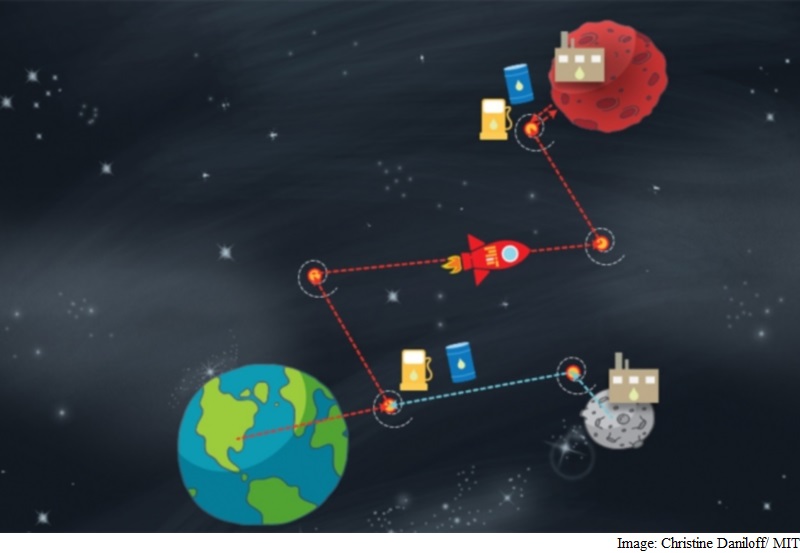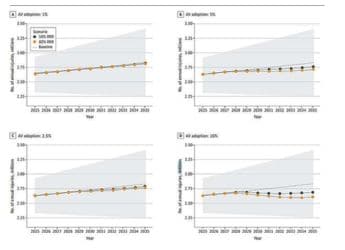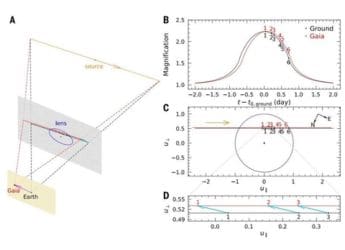- Home
- Science
- Science News
- Refuelling on Moon the Best Shot to Take Humans to Mars: Study
Refuelling on Moon the Best Shot to Take Humans to Mars: Study

Previous studies have suggested that lunar soil and water ice in certain craters of the moon may be mined and converted to fuel.
Assuming that such technologies are established at the time of a mission to Mars, the MIT team has found that taking a detour to the moon to refuel would reduce the mass considerably.
According to Olivier de Weck, professor of aeronautics at MIT, their plan deviates from Nasa's more direct "carry-along" route.
"This is completely against the established common wisdom of how to go to Mars, which is a straight shot to Mars, carry everything with you," de Weck noted.
"The idea of taking a detour into the lunar system ...it's very unintuitive. But from an optimal network and big-picture view, this could be very affordable in the long term, because you don't have to ship everything from Earth," he explained.
The group has developed a model to determine the best route to Mars, assuming the availability of resources and fuel-generating infrastructure on the moon.
Based on their calculations, they determined the optimal route to Mars, in order to minimise the mass that would have to be launched from Earth - often a major cost driver in space exploration missions.
They found the most mass-efficient path involves launching a crew from Earth with just enough fuel to get into orbit around the Earth.
A fuel-producing plant on the surface of the moon would then launch tankers of fuel into space, where they would enter gravitational orbit.
The tankers would eventually be picked up by the Mars-bound crew, which would then head to a nearby fuelling station to gas up before ultimately heading to Mars.
To make this happen, water ice - which could potentially be mined and processed into rocket fuel - has been found on both Mars and the moon.
"There's a pretty high degree of confidence that these resources are available," de Weck added.
"Assuming you can extract these resources, what do you do with it? Almost nobody has looked at that question," he pointed out.
The new mathematical model improves on a conventional model for routing vehicles.
"We adapted the model for the more complex scenario of long-term missions in space -- taking into account constraints specific to space travel," said Takuto Ishimatsu, now a post-doc at MIT.
The model assumes a future scenario in which fuel can be processed on, and transported from, the moon to rendezvous points in space.
"Our ultimate goal is to colonise Mars and to establish a permanent, self-sustainable human presence there," Ishimatsu emphasised.
"However, equally importantly, I believe that we need to 'pave a road' in space so that we can travel between planetary bodies in an affordable way," he noted.
The results were published in the Journal of Spacecraft and Rockets.
Catch the latest from the Consumer Electronics Show on Gadgets 360, at our CES 2026 hub.
Related Stories
- Samsung Galaxy Unpacked 2025
- ChatGPT
- Redmi Note 14 Pro+
- iPhone 16
- Apple Vision Pro
- Oneplus 12
- OnePlus Nord CE 3 Lite 5G
- iPhone 13
- Xiaomi 14 Pro
- Oppo Find N3
- Tecno Spark Go (2023)
- Realme V30
- Best Phones Under 25000
- Samsung Galaxy S24 Series
- Cryptocurrency
- iQoo 12
- Samsung Galaxy S24 Ultra
- Giottus
- Samsung Galaxy Z Flip 5
- Apple 'Scary Fast'
- Housefull 5
- GoPro Hero 12 Black Review
- Invincible Season 2
- JioGlass
- HD Ready TV
- Laptop Under 50000
- Smartwatch Under 10000
- Latest Mobile Phones
- Compare Phones
- Vivo Y50e 5G
- Vivo Y50s 5G
- Realme 16 Pro+ 5G
- Realme 16 Pro 5G
- TCL Nxtpaper 70 Pro
- OPPO A6 Pro 5G
- Honor Power 2
- OPPO A6s
- Zephyrus Duo 16 (2026)
- Asus ROG Zephyrus G16 (2026)
- Realme Pad 3
- OPPO Pad Air 5
- Xiaomi Watch 5
- Huawei Watch 10th Anniversary Edition
- Acerpure Nitro Z Series 100-inch QLED TV
- Samsung 43 Inch LED Ultra HD (4K) Smart TV (UA43UE81AFULXL)
- Asus ROG Ally
- Nintendo Switch Lite
- Haier 1.6 Ton 5 Star Inverter Split AC (HSU19G-MZAID5BN-INV)
- Haier 1.6 Ton 5 Star Inverter Split AC (HSU19G-MZAIM5BN-INV)

















